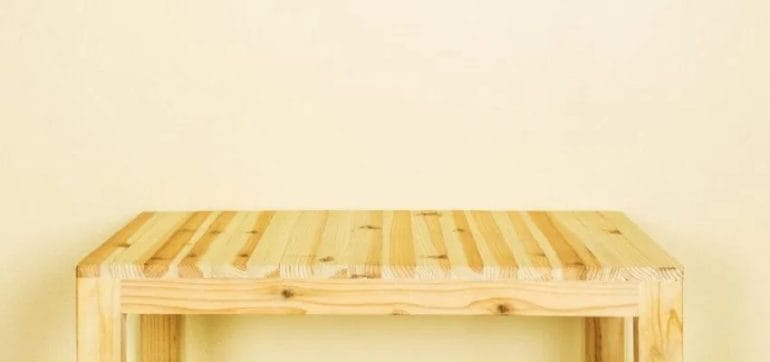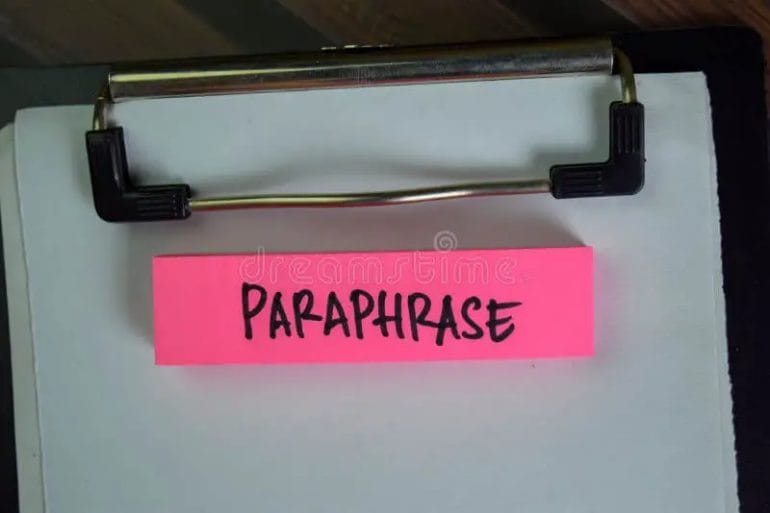A sticky wooden table can be frustrating and unsightly, but there are a few possible reasons behind this issue.
One reason could be the accumulation of dirt, grime, and residue from spills or food. Another possible cause is the use of certain cleaning products that leave behind a sticky residue on the surface. Additionally, humidity or temperature changes in the environment can cause the wood to release natural oils, creating a sticky feel.

To resolve this problem, it is important to identify the underlying cause and take appropriate action. Regularly cleaning the table with a mild wood cleaner, avoiding harsh chemicals, and keeping the table in a controlled environment can help prevent stickiness and maintain its natural beauty.

How to Remove Stickiness from a Wooden Table
Having a sticky wooden table can be frustrating and inconvenient. Whether it’s caused by spilled drinks, food residue, or adhesive residue, it’s important to address the issue promptly to restore the table’s appearance and functionality. In this section, we will provide you with step-by-step instructions on how to effectively remove stickiness from a wooden table.
Materials Needed
- Mild dish soap
- Warm water
- Vinegar
- Olive oil
- Cloth or sponge
- Soft-bristle brush
- Microfiber cloth
Steps to Remove Stickiness
Step 1: Prepare the Cleaning Solution
Start by creating a cleaning solution by mixing mild dish soap with warm water. Use a ratio of 1 tablespoon of dish soap to 1 cup of water. Stir the solution until the soap is fully dissolved.
Step 2: Test in an Inconspicuous Area
Before applying the cleaning solution to the entire table, test it in a small, inconspicuous area to ensure that it doesn’t cause any damage or discoloration to the wood.
Step 3: Remove Loose Debris
Use a soft-bristle brush to gently brush away any loose debris or dirt from the sticky area. Be careful not to scratch the wood surface.
Step 4: Clean with the Solution
Dampen a cloth or sponge with the cleaning solution and gently scrub the sticky area. Apply gentle pressure and work in circular motions to remove the stickiness. Avoid oversaturating the wood with the solution.
Step 5: Rinse with Vinegar Solution
In a separate bowl, mix equal parts vinegar and warm water to create a vinegar solution. Dip a clean cloth or sponge into the solution and wipe down the previously cleaned area. Vinegar helps to remove any residue left by the soap and leaves the wood surface fresh and clean.
Step 6: Dry the Table
Use a dry microfiber cloth to gently dry the table surface. Make sure to remove any excess moisture to prevent water damage to the wood.
Step 7: Apply Olive Oil
If the stickiness persists or if the table surface appears dry, apply a small amount of olive oil to a clean cloth and rub it onto the sticky area. The oil will help to nourish and restore the wood’s natural shine.
Step 8: Regular Maintenance
To prevent future stickiness, it’s essential to maintain the cleanliness of your wooden table. Wipe spills immediately, avoid placing hot or wet items directly on the surface, and regularly clean the table using a mild soap and water solution.
Summary
Removing stickiness from a wooden table can be done with a few simple steps. Start by preparing a cleaning solution using mild dish soap and warm water. Test the solution on an inconspicuous area, then remove any debris from the sticky area. Gently scrub the surface with the cleaning solution and rinse with a vinegar solution. Dry the table thoroughly and apply olive oil if necessary. Remember to practice regular maintenance to keep your wooden table clean and free from stickiness.

Preventing Stickiness on Wooden Tables
Wooden tables can be a beautiful addition to any home or office space. However, one common issue that many people face with wooden tables is stickiness. Sticky residue can be unsightly and can make it difficult to use the table properly. In this section, we will discuss some effective ways to prevent stickiness on wooden tables.
1. Clean Regularly
Regular cleaning is essential to maintain the beauty of wooden tables and prevent stickiness. It is important to clean up spills and stains immediately to avoid them seeping into the wood and causing stickiness. Use a soft, damp cloth or sponge to gently wipe the surface, and avoid using harsh chemicals or abrasive cleaners that can damage the wood.
2. Use Coasters and Placemats
Using coasters and placemats is a simple yet effective way to prevent stickiness on wooden tables. Place coasters under glasses, cups, and bottles to protect the table’s surface from moisture and potential stickiness. Similarly, use placemats for plates, bowls, and utensils to prevent any accidental spills or food residue from coming into direct contact with the table.
3. Apply Wax or Sealant
Applying a wax or sealant to your wooden table can create a protective barrier, preventing stickiness and enhancing the table’s durability. Before applying any product, ensure that the table is clean and dry. Use a soft cloth to apply a thin layer of wax or sealant according to the manufacturer’s instructions. Regular reapplication may be necessary to maintain the protective layer.
4. Avoid Excessive Moisture
Excessive moisture is one of the main culprits behind stickiness on wooden tables. To prevent this issue, avoid placing wet or damp items directly on the table’s surface. Wipe off any spills or moisture immediately, and use coasters or placemats as mentioned earlier. Additionally, avoid placing potted plants without protective saucers to prevent water from seeping onto the table.
5. Dust Regularly
Dust accumulation can lead to stickiness on wooden tables over time. Make it a habit to dust the table regularly using a soft, dry cloth or a microfiber duster. This will help remove any dust particles or debris that can contribute to stickiness. Be gentle while dusting to avoid scratching the table’s surface.
6. Use Table Runners or Tablecloths
Using table runners or tablecloths can offer an added layer of protection to your wooden table, preventing stickiness. Select a table runner or tablecloth that complements your décor and fits the dimensions of your table. These accessories not only safeguard the table but also add a decorative element to your space.
7. Store Items Properly
Proper storage of items is important to prevent stickiness on wooden tables. Avoid placing sticky or greasy items directly on the table’s surface. Instead, use containers, trays, or decorative boxes to store these items. This will help contain any potential mess and prevent stickiness.
In summary, preventing stickiness on wooden tables is a matter of regular cleaning, using coasters and placemats, applying wax or sealant, avoiding excessive moisture, dusting regularly, using table runners or tablecloths, and storing items properly. By following these tips, you can keep your wooden table looking beautiful and free from stickiness.

Natural Remedies for Sticky Wooden Tables
If you have a wooden table at home, you may have encountered the problem of it becoming sticky over time. This can happen due to a variety of reasons, such as spilled food or drinks, exposure to heat, or the accumulation of dirt and grime. Sticky wooden tables not only look unsightly, but they can also be a hassle to clean. However, there are several natural remedies that can effectively remove stickiness and restore the beauty of your wooden table.
1. Vinegar and Water Solution
Vinegar is a versatile household ingredient that can be used to clean and remove stickiness from wooden surfaces. To create a vinegar and water solution, mix equal parts of white vinegar and water in a spray bottle. Spray the solution onto the sticky areas of your wooden table and let it sit for a few minutes. Then, gently wipe the surface with a soft cloth or sponge. Vinegar helps to dissolve the sticky residue, leaving your table clean and shiny.
2. Lemon Juice
Lemon juice is another natural remedy that is effective in removing stickiness from wooden tables. The acidity of lemon helps to break down the sticky substances and remove them easily. Squeeze fresh lemon juice onto a clean cloth and rub it onto the sticky areas of your table. Allow it to sit for a few minutes, then wipe it off with a damp cloth. The refreshing scent of lemon will also leave your table smelling fresh.
3. Baking Soda Paste
Baking soda is a gentle abrasive that can effectively remove stickiness and stubborn stains from wooden surfaces. Create a paste by mixing baking soda with a small amount of water until it forms a thick consistency. Apply the paste onto the sticky areas of your wooden table and gently scrub it using a soft cloth or sponge. Rinse off the paste with water and wipe the surface clean. Baking soda will help to lift the sticky residue and leave your table smooth and clean.
4. Olive Oil
Olive oil is not only a great addition to your kitchen, but it can also be used to remove stickiness from wooden tables. Apply a small amount of olive oil onto a soft cloth and rub it in circular motions on the sticky areas. The oil will help to dissolve the sticky residue and restore the natural shine of your wooden table. Afterward, wipe off any excess oil with a clean cloth.
5. Toothpaste
Toothpaste, particularly non-gel varieties, can be utilized as an effective remedy for sticky wooden tables. Apply a small amount of toothpaste onto a soft cloth and rub it onto the sticky areas. Gently scrub the surface using circular motions, then wipe it clean with a damp cloth. The mild abrasiveness of toothpaste will help to remove the stickiness and leave your table looking refreshed.
6. Beeswax or Furniture Wax
One of the best ways to prevent stickiness on wooden tables is by using a protective layer of beeswax or furniture wax. These products create a barrier on the surface of the wood, preventing the buildup of stickiness and making it easier to clean in the future. Apply a thin layer of beeswax or furniture wax onto your wooden table, following the manufacturer’s instructions. Allow the wax to dry and buff the surface with a clean cloth to restore its natural luster.
In summary, sticky wooden tables can be effectively cleaned and restored using natural remedies. Whether it’s vinegar, lemon juice, baking soda, olive oil, toothpaste, or beeswax, these simple ingredients can help you remove stickiness and bring back the beauty of your wooden table. Regular maintenance and prevention will also go a long way in keeping your table clean and free from stickiness in the future.
How to Properly Clean and Maintain Wooden Tables
A wooden table can be a beautiful and timeless addition to any home. Whether you have a dining table, a coffee table, or a side table, proper cleaning and maintenance are essential to keep it looking its best for years to come. In this section, we will discuss the steps you should take to properly clean and maintain your wooden table.
1. Regular Dusting
Dusting your wooden table regularly is the first step in keeping it clean. Use a soft, lint-free cloth or a feather duster to gently remove any dust or dirt from the surface. Avoid using abrasive materials or harsh chemicals that can damage the wood.
2. Wipe with a Damp Cloth
For light cleaning, a damp cloth can be used to wipe down the table. Moisten a soft cloth with warm water and gently wipe the surface to remove any spills or stains. Be sure to wring out any excess water to prevent water damage to the wood.
3. Mild Soap Solution
If your wooden table is stained or has stubborn dirt, you can use a mild soap solution to clean it. Mix a small amount of mild dish soap with warm water and use a soft cloth to gently scrub the surface. Rinse the cloth frequently and avoid saturating the wood with excessive moisture.
4. Removing Stains
If you encounter tough stains on your wooden table, there are a few techniques you can try to remove them. For water rings, apply a mixture of equal parts baking soda and non-gel toothpaste to the stain. Gently rub in a circular motion and wipe away any residue with a clean cloth. For grease stains, sprinkle cornstarch or talcum powder on the area and let it sit for a few hours. Then, wipe it away with a damp cloth.
5. Avoid Direct Sunlight and Heat
Wood is sensitive to sunlight and heat, which can cause fading, warping, or cracking. To protect your wooden table, avoid placing it in direct sunlight or near sources of heat such as radiators or vents. Use curtains or blinds to block out sunlight and consider using coasters or trivets to protect the surface from hot dishes or beverages.
6. Use Protective Coatings
Applying a protective coating to your wooden table can help maintain its beauty and durability. There are various options available, including wax, varnish, or polyurethane. Follow the manufacturer’s instructions for application and reapply as needed to protect the wood from moisture, scratches, and other damage.
7. Regular Maintenance
In addition to regular cleaning, it’s important to perform routine maintenance on your wooden table. This includes checking for loose joints or screws and tightening them if necessary. You should also inspect the wood for any signs of damage, such as cracks or splinters, and address them promptly to prevent further deterioration.
In summary, proper cleaning and maintenance are crucial for preserving the beauty and longevity of your wooden table. Regular dusting, gentle cleaning with a damp cloth or mild soap solution, and removing stains as soon as possible are key steps to keep your table looking pristine. Remember to avoid direct sunlight and heat, use protective coatings, and perform regular maintenance to ensure your wooden table remains a stunning centerpiece in your home for years to come.
FAQs
Why is my wooden table sticky?
A sticky wooden table can be caused by various factors such as spills, humidity, or the use of certain cleaning products. It could also be due to a buildup of wax or polish. To resolve the issue, clean the table with a gentle wood cleaner, remove any wax or polish buildup, and ensure the table is properly protected from spills and moisture.
Conclusion
In conclusion, discovering a sticky wooden table can be a frustrating experience. However, it is important to understand the underlying causes and how to address them effectively. Whether it is due to spilled beverages, improper cleaning products, or natural residue buildup, taking prompt action is key. Regularly wiping down the table with a mild soap and water solution, followed by drying it thoroughly, can help prevent stickiness. Additionally, using furniture polish or wax specifically designed for wooden surfaces can restore its smoothness and provide long-lasting protection. By implementing these simple steps, you can maintain a beautiful and non-sticky wooden table for years to come.